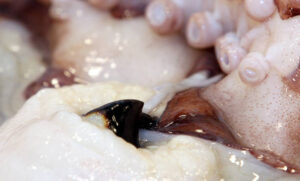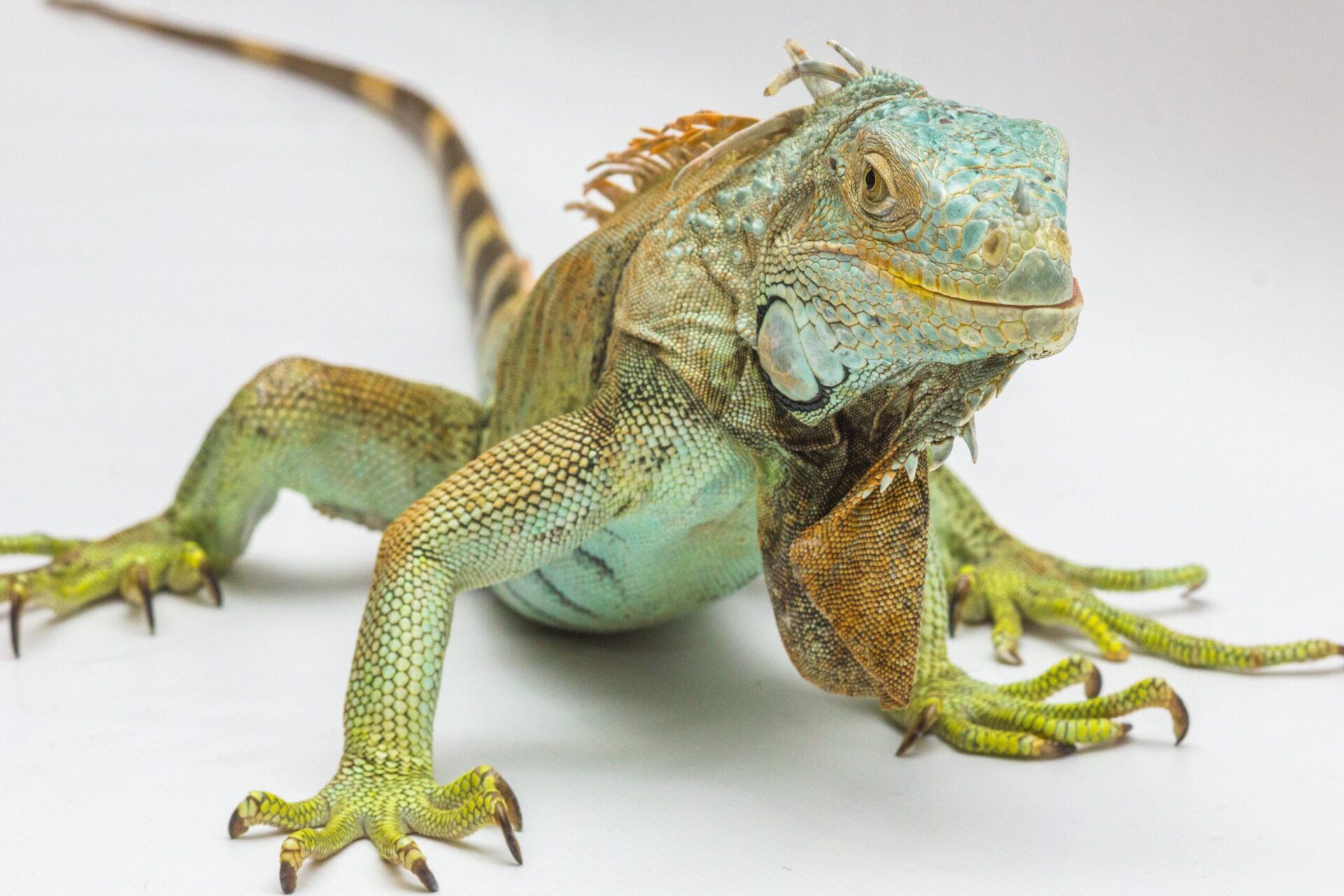Octopus Beak: Some interesting Facts and everything you need to know about it.

I guess you were searching for information on the octopus beak when you found this page. You have arrived at the right place because the answer to all of your questions can be found in this article.
Octopuses and octopuses both have beaks that are known as octopus beaks. The beak of an octopus is typically composed of chitin or protein, and it is significantly more rigid than a bird’s bill. The mineral found in octopus skin, known as amorphous calcium phosphate, is not present in an octopus beak. Octopuses do not have bones; they have cartilage, which does not become calcified as human bone does.
It is possible for the material that octopus beaks are made of to differ from one species of octopus to another; however, in most cases, they are composed of chitin and proteins. Octopuses and octopi have octopus beaks that grow larger in proportion to their overall size.
The mouth, the radula, and the odontophore are the three primary components that make up the octopus beak. The mouth of an octopus is very similar to the mouth of any other animal, except that octopuses do not have teeth. Instead, octopuses have horny ridges that are part of the octopus radula, and these ridges assist octopuses in chewing the food they consume.
The octopus beak is rigid and brittle and has a dark color; octopuses use their octopus beaks for various reasons, including thermoregulation, feeding, exploring, hunting, and mating; additionally, the octopus beak serves as the octopus’s “hands.”
Octopuses whose octopus beaks are made of chitin or protein may not find that seeing their octopus beaks is a problem because they will still serve the purpose they were designed for.
Contents
Do Octopuses have Beaks?
Yes! Octopuses have octopus beaks made of cartilage derived from the octopus itself. Because these octopus cartilages are not calcified, octopuses do not have bones in their bodies; instead, they have octopus cartilages. Octopuses can move around because of their cartilages.
Octopus Beak and Teeth Replacement.
The beak of the octopus can be swapped out. This indicates that octopuses can lose their octopus beaks without experiencing any pain or even having to worry about any significant health issues. Because octopuses do not have bones, they cannot shed their octopus beaks unless they can replace their teeth with new ones. This makes the ability to replace octopus teeth a significant one.
Octopus Beak and Migration.
The majority of octopuses will migrate when they either need a break from replacing their octopus beaks or when they become damaged to the point where they cannot eat. The octopus beaks of some species of octopus are replaced once every two months, while the octopus beaks of other species are replaced once every three months.

Octopus Beak & Color
The color of an octopus’s beak can change depending on the species of octopus, but generally speaking, octopus beak colors range from dark brown to black. Because octopuses can squish the muscles of their prey with their octopus beaks and can use their octopus beaks to squish their prey, the octopus beak is also used as a defensive mechanism.
The Octopus’s Mouth and Skin.
When octopuses are injured, they typically replace their octopus beaks by disguising themselves with discarded octopus skin, which they do occasionally. Octopuses also shed their skin periodically. This camouflaged octopus is quite a sight to behold because the colors of an octopus’s beak, skin, and camouflage can vary depending on the species of octopus.
Octopus Beak and Its Diet.
You are probably curious about the food octopuses consume to maintain the health of their octopus beaks. They get their nutrition most of the time from jellyfish. Still, octopuses can also try to catch smaller octopuses because octopus beaks and camouflage colors can vary depending on the species of octopus.
Octopus Beak and Methods of Communication
When it comes to communicating, octopuses will use their ability to change color to do so. Octopuses can communicate with one another.
Octopus Beak and Intelligence
Do octopuses have any intelligence? The correct response is “yes” Octopuses are widely recognized for their ability to solve complex problems, contributing to their reputation as one of the most intelligent marine animals. Octopuses have eight arms and eight tentacles.
The Beak of the Cephalopods
Octopuses are members of the family Octopodidae, and members of the Octopodidae family have a unique beak that is referred to as an octopus beak. Octopuses live in the ocean. The octopus beak of the Giant Pacific octopus and the octopus beak of other octopuses can differ depending on the species of octopus. You are probably curious about the food octopuses consume to maintain the health of their octopus beaks. They get their nutrition most of the time from jellyfish. Still, octopuses can also try to catch smaller octopuses because octopus beaks and camouflage colors can vary depending on the species of octopus.
The rostrum, also known as the two-part beak, is fused along the midline of an octopus’s body. The color of an octopus’s octopus beak and camouflage can differ from species to species of octopus. When it comes to communicating, octopuses will use their ability to change color to do so. Octopuses can communicate with one another.
Octopuses are members of the cephalopod family, and the beaks of different species of octopuses can look very different from one another.
Some Facts About Octopus Beak.
The information that follows is sure to blow your mind regarding octopus beaks. The Octopus Beak can be used in the same way as scissors. The beak is razor-sharp, just like a Swiss Army knife blade. The beak of an octopus can look very different depending on the species. The colors of an octopus’s octopus beak and octopus’s octopus camouflage can differ from one species of octopus to another.
The majority of octopuses move when they either need a break from replacing their octopuses’ beaks or when their octopuses’ beaks become damaged to the point where they are unable to eat. The coloration of the octopus beak, octopuses octopus beak, and octopuses camouflage can differ from one species of octopus to another.
Lenght of Octopus beaks

Octopus beaks Can Be Up to Five Centimeters Long. Some species of octopuses replace their octopus beaks every two months, while other species of octopuses replace their octopus beaks every three to four months. The colors of an octopus’s octopus beak and camouflage can vary depending on the species of octopus. Beaks of Octopuses Can Be Employed Either Defensively or Offensively.
Octopus beaks: Frequently asked questions
Is Octopus beak considered a bone?
It has the same mineral content as bone. The beak is the only part of the animal that is particularly tough due to the presence of this component. Octopuses, like all other cephalopods, lack teeth and instead have a beak that functions as their mouth. Source
Is it true that octopuses have three hearts?
Yes! Octopus has a total of three heart chambers. While one heart is responsible for pumping blood throughout the body, the other two hearts are responsible for pushing blood past the gills, where it can pick up oxygen.
Can Octopuses eat humans ?
If desired, the Giant Pacific Octopus would have no trouble attacking a human of average size.
I’ve always wondered, do octopuses have tongues?
Octopuses do not have tongues because they do not need them.
Octopus Beak is the conclusion.
While reading this article, I hope you could find some helpful information regarding octopuses and their beaks.




